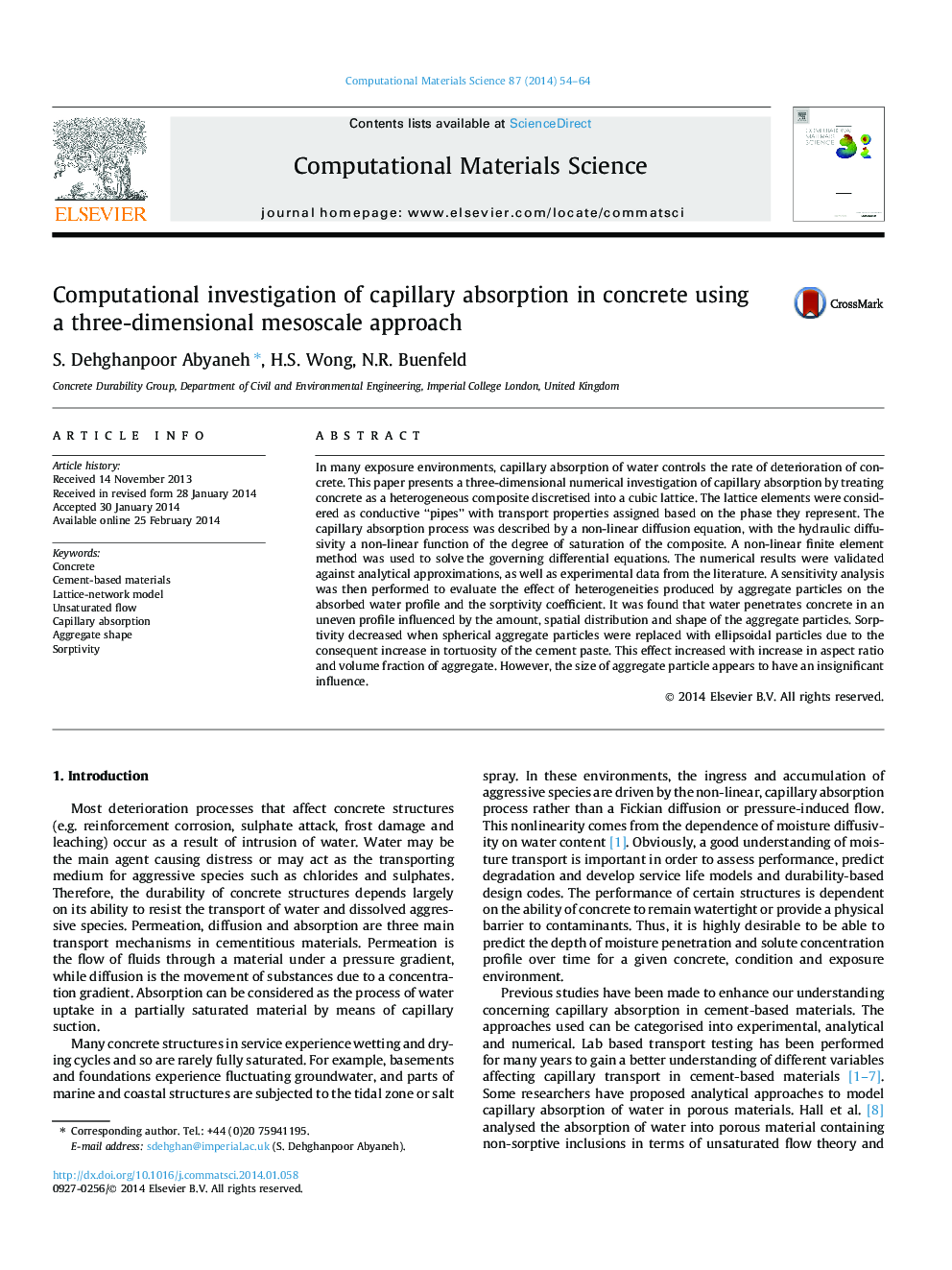| Article ID | Journal | Published Year | Pages | File Type |
|---|---|---|---|---|
| 1560540 | Computational Materials Science | 2014 | 11 Pages |
Abstract
In many exposure environments, capillary absorption of water controls the rate of deterioration of concrete. This paper presents a three-dimensional numerical investigation of capillary absorption by treating concrete as a heterogeneous composite discretised into a cubic lattice. The lattice elements were considered as conductive “pipes” with transport properties assigned based on the phase they represent. The capillary absorption process was described by a non-linear diffusion equation, with the hydraulic diffusivity a non-linear function of the degree of saturation of the composite. A non-linear finite element method was used to solve the governing differential equations. The numerical results were validated against analytical approximations, as well as experimental data from the literature. A sensitivity analysis was then performed to evaluate the effect of heterogeneities produced by aggregate particles on the absorbed water profile and the sorptivity coefficient. It was found that water penetrates concrete in an uneven profile influenced by the amount, spatial distribution and shape of the aggregate particles. Sorptivity decreased when spherical aggregate particles were replaced with ellipsoidal particles due to the consequent increase in tortuosity of the cement paste. This effect increased with increase in aspect ratio and volume fraction of aggregate. However, the size of aggregate particle appears to have an insignificant influence.
Keywords
Related Topics
Physical Sciences and Engineering
Engineering
Computational Mechanics
Authors
S. Dehghanpoor Abyaneh, H.S. Wong, N.R. Buenfeld,
